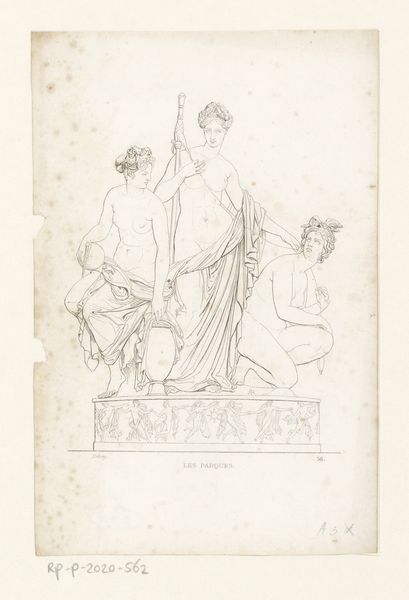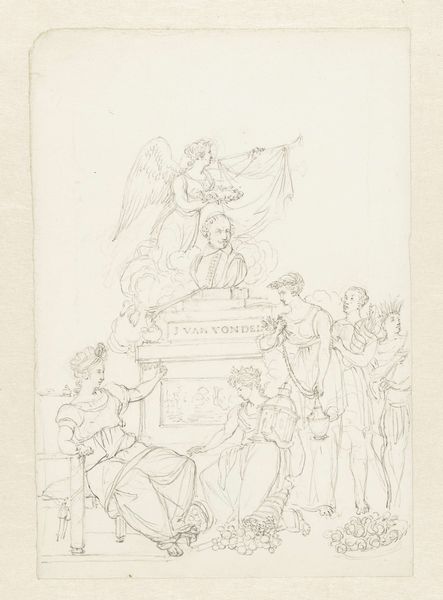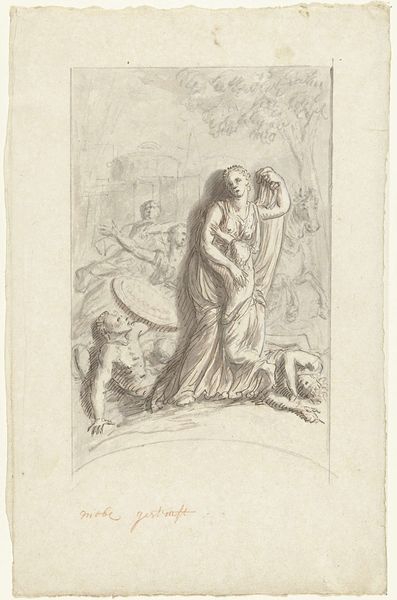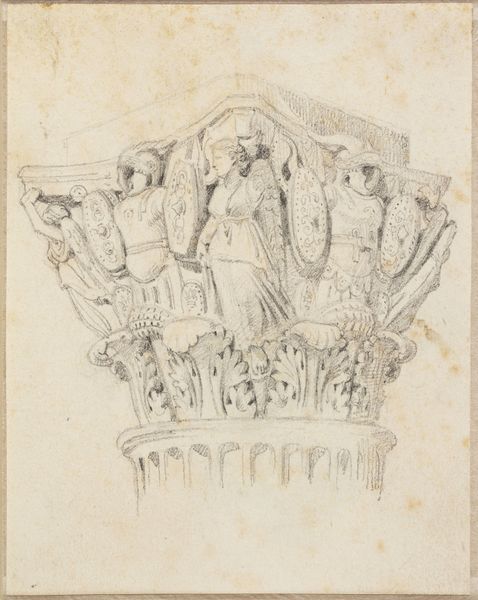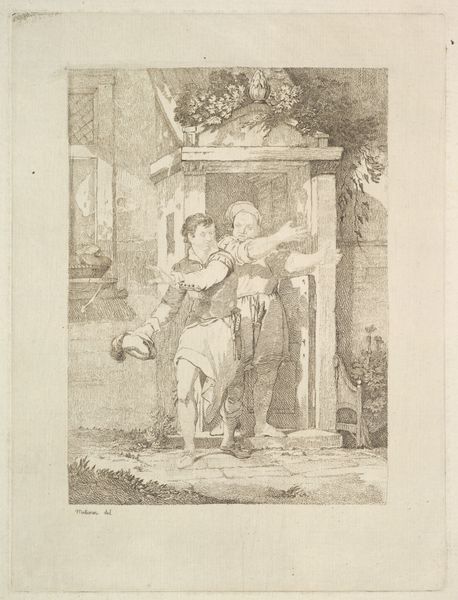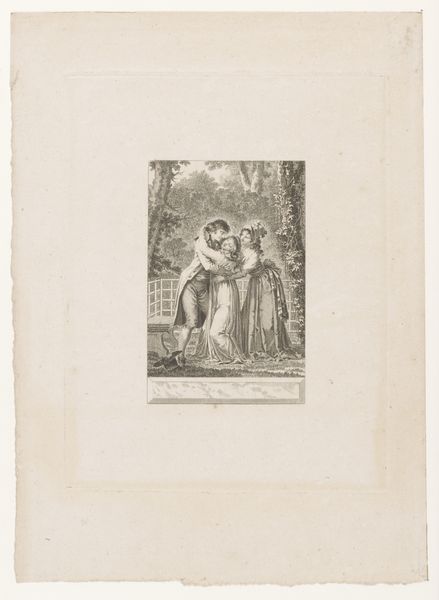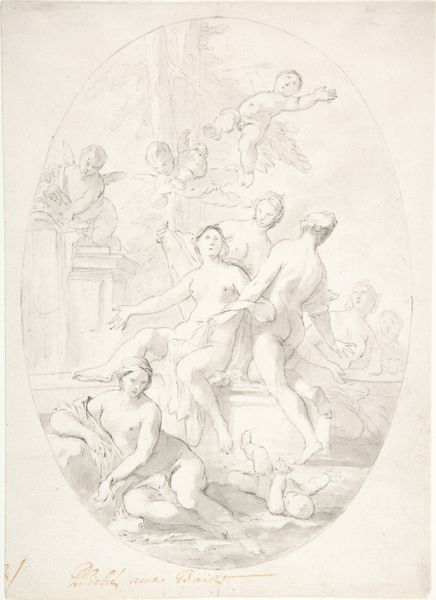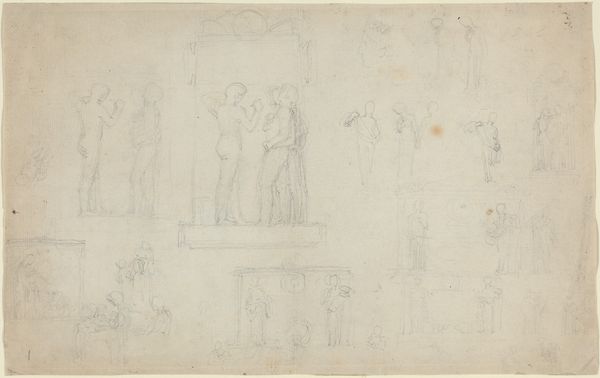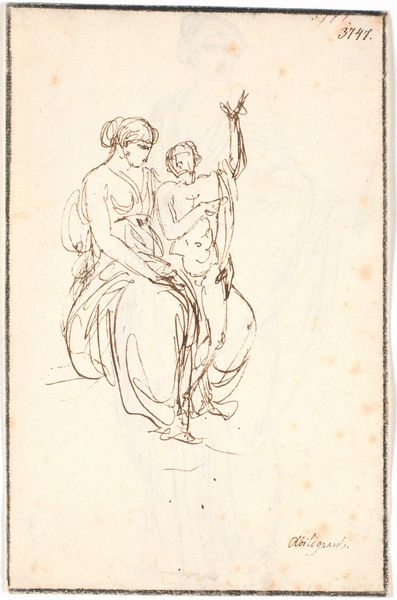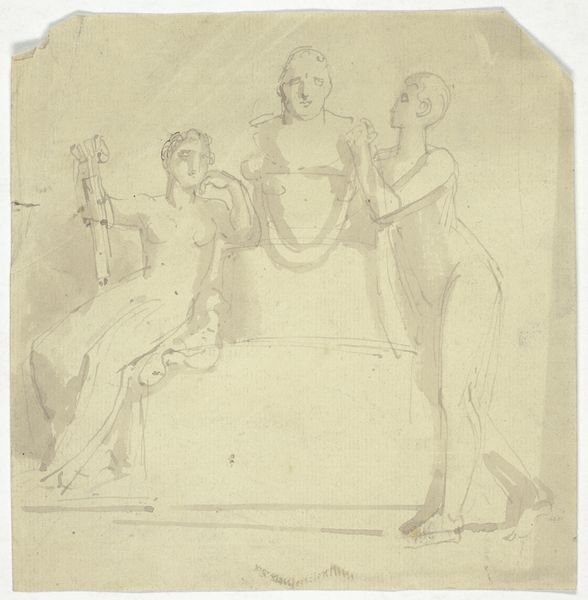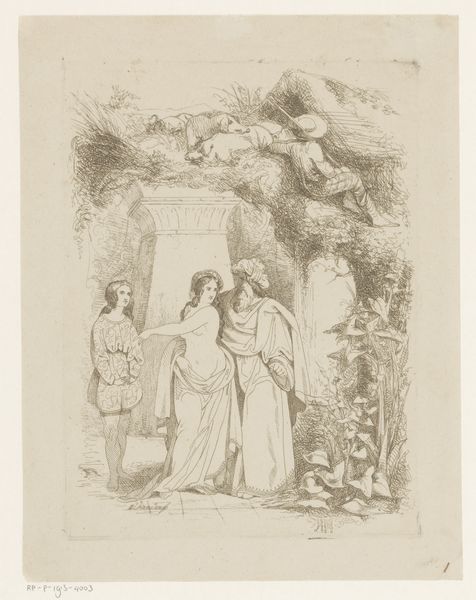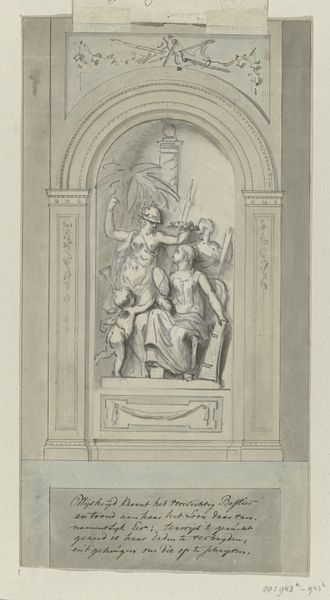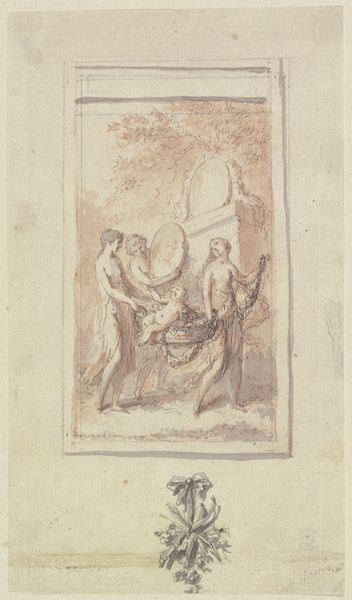
Ontwerp voor een pendule ter gelegenheid van een huwelijk c. 1800 - 1815
0:00
0:00
drawing, paper, pencil
#
portrait
#
drawing
#
neoclacissism
#
allegory
#
pencil sketch
#
figuration
#
paper
#
form
#
pencil
#
line
#
history-painting
Dimensions: height 252 mm, width 181 mm
Copyright: Rijks Museum: Open Domain
François Gérard sketched this design for a wedding clock using graphite, likely in France during the late 18th or early 19th century. Its Neoclassical style, with idealized figures and architectural motifs, reflects the cultural values of the time. The image creates meaning through its visual codes, alluding to marriage as a classical ideal. We see this with the figures in Greco-Roman dress, flanked by cherubs, and the temple-like structure above. France then, influenced by Enlightenment ideals, saw a surge in art that celebrated reason, order, and the virtues of classical antiquity. Institutions like the Académie des Beaux-Arts reinforced these aesthetic and social values, emphasizing the importance of history and tradition in artistic production. This clock design, with its blend of elegance and symbolism, speaks to the aspirations of the bourgeoisie, who sought to emulate the lifestyles of the aristocracy. Understanding this artwork requires delving into the social and institutional context of its time, using resources such as period writings, art criticism, and historical records. Ultimately, the meaning of art is contingent on the social and institutional forces that shape its creation and reception.
Comments
No comments
Be the first to comment and join the conversation on the ultimate creative platform.
